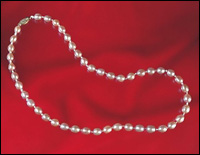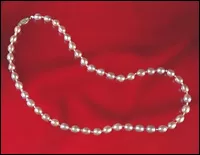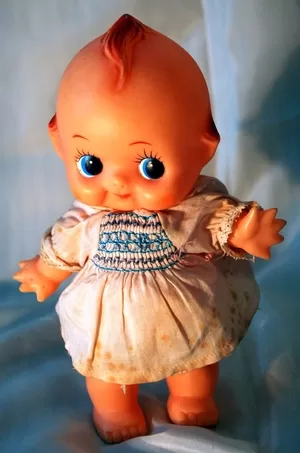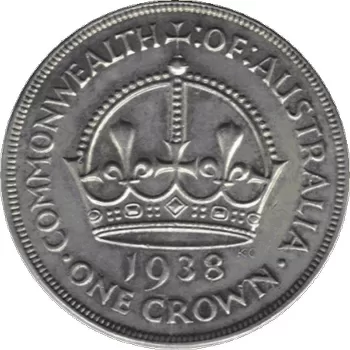The value of pearls is judged on six factors: color, size, shape, surface, luster, and the thickness of the nacre, a natural substance that the oyster uses to coat intrusions such as grit or sand into their shells.
Pearls with a rose color are more sought after than yellow or gold. A highly reflective luster is better than dull and a pearl’s value increases with the thickness of the nacre.
Nacre Thickness
Nacre thickness is the most important factor when measuring pearl quality. It determines how long the beauty of the pearls will last.
Pearls with thick nacre will last a life time, while those with thin nacre won’t last long, their nacre will wear off over time.
The French Polynesia Government has set a minimum nacre thickness of 0.8mm for Tahitian pearls. Pearls with less than 0.8mm nacre thickness are prohibited from exporting.
Pearl color
Black-lipped oysters produce the natural black color of Tahitian pearls. Although Tahitian Pearls are famous for their black natural color, they have a wide range of colors including black, grey, blue, green and brown.
These colors are referred as body color, which are enhanced by at least one overtone color. Overtone colors include blue, gold, silver, pink and reddish purple.
Different names are given to a combination of overtone and body colors.


Moon grey: pale gray
Silver: gray
Pigeon grey: purplish gray
Tahitian gold: golden black
Lavender: bluish black
Champagne: yellowish gray
Cherry: purplish black
Pistachio: greenish gray
Peacock: greenish black
Peacock and Pistachio are the most popular colors of Tahitian pearls and they have a higher value than other colors.
Surface quality of pearls
There are four grades to rate the surface quality of Tahitian pearls: A, B, C, D.
“A” quality pearls are the highest quality and they are the most valuable.
A Quality: Pearls with very high luster and a clean surface (one to a few slight flaws are distributed over less than 10% of the pearl surface)
B Quality: Pearls with medium to high luster and slight surface imperfection (some slight flaws are distributed over 30% of the pearl surface)
C Quality: Pearls with medium luster and medium surface imperfection (some slight flaws are distributed over 60% of the pearl surface.
D Quality: Pearls are heavily spotted (many slight flaws or several deep flaws are distributed over 60% of the pearl surface)
Pearl Size
Most common sizes for pearls range from 8mm to 14mm. Some Tahitian pearls are 16mm and very rarely over 18mm.
The largest Tahitian pearl in the world is 21mm for a round pearl and 25mm for a semi-round pearl. The larger the pearls, the more valuable the pearls are.
Pearl Shapes
Pearls have the following shapes: round, semi-round, semi-baroque, baroque, and ringed or circled.
Among all shapes, round is the most desirable and valuable. Other shapes may have special appeal to jewelry artists.
Round pearls are almost perfect spheres, are rare and only accounts for 5-10% of pearls produced each year.
Semi-round pearls are nearly round.
Semi-baroque pearls are subdivided into four shapes: drop, button, pear and oval.
Baroque pearls are described as irregular shapes.
Do you need to Clean Pearls?
Here we explain why cleaning pearls is essential to maintaining their value:
If you wear your pearls frequently, cosmetics and perfumes can build up and change the color. Cleaning them brings back their natural finish.
How do you clean pearls?
We always recommend a natural cleaning of pearls. The best way to maintain their appearance and color is to wash them with a non-abrasive cleaning agent like a mild shampoo that will take off the oils. Don’t use any abrasive soaps, ammonia, or steam.
Can pearls be polished?
Absolutely not. The average cultured pearl has nacre that’s half a millimeter thick. If you polish the pearls, you risk ruining the nacre. It’ll start flaking off. You’ll pretty much ruin the pearls. Properly care for your pearls, and they’ll last a lifetime.
Don’t use vinegar – it will dissolve your pearls.
Cultured Pearl Types
The four main cultured peal types are Akoya, Freshwater, Tahitian, and South Sea. Some are much more expensive than others.
Listed here are the different types of Cultured Pearls and how they are cultured.
Akoya or Japanese Pearls
Probably the most well known name of a pearl type from the Akoya oyster (Pinctada fucata martensil). Most akoya pearls are produced in Japan although some are now grown in China and India.
Considered the classic amongst cultured pearls, Akoya Pearls are primarily round or oval in shape and are produced in white and cream shades with silver or pink overtones.


The akoya pearl oyster measures only six to nine centimeters across – less than half the size of Australia’s silver-lipped pearl oyster. Smaller nuclei are implanted so the pearls range from 2 to 10 millimeters in diameter.
South Sea Pearls
South Sea Pearls are primarily cultured in the waters of Australia, the Philippines and Indonesia.
Pearls found from the waters of Tahiti and French Polynesia are sometimes mistaken for Black South Sea Pearls. The distinction between these two types of pearls are the oyster they are cultivated in.
The South Sea Pearls are cultured in the silver or gold-lipped pearl oyster and the color is usually white or silver colored, but they can also be shades of yellow or blue-gray with pink or green overtones.
The gold-lipped pearl oyster used to culture these pearls (Pinctada maxima) is the world’s largest pearl mother and is considered by experts to produce the best pearls in the world.


The sizes of the pearls produced range in size from 10 to 20 millimeters, though pearls larger than 16 millimeters are rare. Their rarity and exceptional sizes make them highly prized. These are some of the largest and most expensive pearls available.
Tahitian Pearls or Black South Sea Pearls
Sometimes referred to as Black South Sea Pearls, Tahitian pearls are cultured from the Cook Islands, eastward through Tahiti to the Tuamotu Archipelago and the Gambier Islands in French Polynesia.


Tahitian pearls are grown in the black-lipped pearl oyster (Pinctada margaritifera).
The colors produced vary widely from purple, green, black and shades from gray to cream and even white. The rarest and highly sought after color is “peacock green” – the greenish black color of a peacock feather.
Black Tahitian pearls are generally smaller than the White South Sea Pearls ranging in size from 7 to 15 millimeters.
Freshwater Pearls
Freshwater Pearls are small, sometimes irregularly shaped pearls that are grown in various species of freshwater mussel. The colors range from pink, gray or black, bronze, lavender, to white.


Shapes include rounds, pears, eggs, drops, buttons, dome, and baroques.
Most cultured freshwater pearls are composed entirely of nacre which leads to their high luster and quality.
The pearls are grown for up to three years to achieve their luster and quality.
Real Pearls and Imitation Tahitian Pearls
Be cautious about imitation pearls for sale. Here are some tips about the differences between real and imitation pearls.
Real Tahitian pearls have the following characters:
1. Real pearls have overtones or hue: green, gray, blue, peacock, eggplant or magenta. Real Tahitian pearls have a faint reddish glow when viewed through crossed filters.
2. Real pearls are cold to the touch. They can quickly adopt body temperature.
3. Real pearls are gritty when rubbed across the teeth.
4. Drilled holes are smooth around the edges.
5. Real pearls are heavy to hold.
Imitation Tahitian pearls have the following characters:
1. Imitation Tahitian pearls only have one body color; they don’t have any overtone colors or hues. The color looks very flat.
2. Imitation pearls always have the same temperature as their environment. When touching them on your skin, you won’t feel coolness from the pearls.
3. Imitation pearls are smooth on teeth.
4. Drilled holes are bumpy, indicating the pearls melted during drilling.
5. Imitation pearls are light in weight.
6. When viewed under a 10 x lens, bubbles or mat patterns can be seen under the surface of imitation pearls.
A pearl wedding
Pearls the traditional 30 year wedding anniversary gift
Pearls are for birthstone for June
Traditional Gem(s): Alexandrite
Modern Gem(s): Pearl, Moonstone
The pearl has been linked with chastity and modesty, making it something of an angelic, pure birthstone. It is also linked to successful and happy marriages.
Further Reading:
Pearls by Fred Ward
The Pearl Book, 2nd Edition: The Definitive Buying Guide to How to Select, Buy, Care for & Enjoy Pearls by Antoinette Matlins
Related feature stories
What are Garnitures? Mantelpiece decorations, usually vases
Value of Collecting Chinese Porcelain. Chinese Dynasties
Why Collect Asian Art? What to collect
Japanese Pottery: Satsuma & Japanese Era Names (Nengo)
National Gallery of Victoria sets a new world record with House of Chanel purchase
Colonel Blood’s plot to pinch the British Crown Jewels
Stolen Crown Jewels from the Royal Palace Dresden
World’s most exquisite pink diamonds at Melbourne Museum





